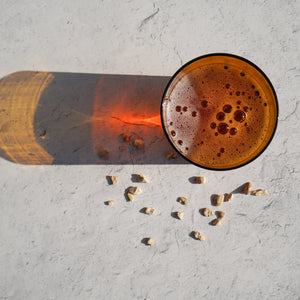A green leafy plant that grows in the drier regions of India like Madhya Pradesh and Punjab, ashwagandha is what we like to call the chill pill of ancient Ayurvedic herbs. And even though it's entirely unrelated to the plant, ashwagandha is often called Indian ginseng because it’s treated similarly in Ayurveda–the Indian system of medicine–as ginseng is treated in traditional Chinese medicine. That’s all because ashwagandha is a known rasayana, a restorative botanical that both mellows and sharpens the mind.
It makes a lot of sense once you think about where the botanical got its name–its Latin species name somnifera, after all, literally translates to “sleep-inducing.” And while we’re talking semantics, the origin of the word ashwagandha too hints a bit at the botanical’s key benefits. The word comes from a combination of the Sanskrit words ashva, meaning horse, and gandha, meaning smell. Its loose translation is “the smell and strength of a horse.” While the smell is kinda literal, the strength winkingly refers to the plant’s aphrodisiac qualities, as it’s sometime used as sexual function support.
So yeah, ashwagandha will help chill you out, but it also might make you horny, which is a pretty great combo if you ask us. And while we’ll sing the praises of this power plant all day every day, we’re definitely not the first ones to love it. Rumor has it Alexander the Great and his army once drank wine tinged with ashwagandha to gear up for battle, a move that honestly might have earned him “The Great” moniker.
In Purple Lune, we follow Alexander’s lead and fill up our cup with ashwagandha, plus other adaptogens like tart cherry and L-theanine derived from green tea. These botanicals work together to balance your body out after a busy day. It’s just the thing to sip on after an especially brutal barre class, your regular evening walk, or just a long day at your desk. We’ll drink to that.

